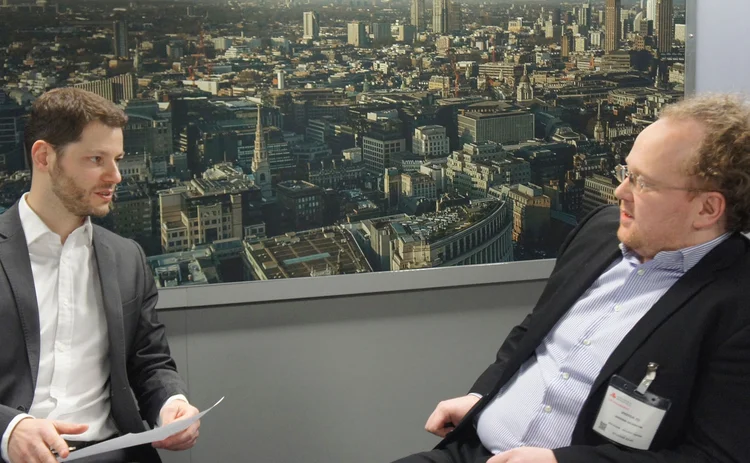
Podcast: Andrew Dickinson on CCPs’ defence mechanisms
Trades’ size limits, membership rules and more transparency are key to avoid another CCP default, says BofA quant

For this Quantcast, Risk.net spoke with Andrew Dickinson, who leads the CCP analytics group at Bank of America.
With Leif Andersen, global head of the quantitative strategies group, Dickinson developed a model to assess exposure to a central counterparty. Crucially, the model has the ability to capture wrong-way risk stemming from the presence of clearing members with outsized positions. Such positions can trigger the member’s default in the case of large, adverse market moves.
If the defaulting member has an unhedged position and is unable to meet the margin calls, the CCP’s default fund could suffer significant losses. The case of power trader Einar Aas’ default at Nasdaq Clearing in September 2018, and the default fund’s subsequent loss of $119.7 million, set alarm bells ringing for banks, CCPs and regulators.
“In our view, initial margin on its own is not a sufficient risk mitigant in isolation. It needs to be complemented by suitable controls in order to prevent members clearing outsized, unhedged positions,” says Dickinson.
The concerns of broker-dealers have been debated in meetings organised by the Futures Industry Association and the International Swaps and Derivatives Association. The message from the industry seems to be unanimous.
“We and our peers are suggesting there needs to be a strengthening of the regulation to either impose limits or stronger membership criteria, or at the very least have greater transparency,” says Dickinson, lamenting the scarcity of transparent information released at the time of Nasdaq’s default.
He explains how their previous model was extended to include a probability distribution, a Student-t, which allows for arbitrarily fat tails to model rare events. Its output is one easy-to-interpret figure that can provide precious information to all of the parties involved and help them decide how to deal with such circumstances.
Index
00:00 Intro
02:02 Central clearing vs bilateral clearing
05:05 One bad apple
07:10 What are the results in the paper?
09:40 Key components of the model
12:30 Wrong-way risk
17:00 How this model helps understanding of Einar Aas’ default at Nasdaq
19:15 What info does the model give you and how can you use it?
20:50 Who should decide to adopt this model?
23:15 Feedback from CCPs and regulators
26:20 Model’s further developments
To hear the full interview, listen in the player above, or download. Future podcasts in our Quantcast series will be uploaded to Risk.net. You can also visit the main page here to access all tracks, or go to the iTunes store or Google Podcasts to listen and subscribe.
Only users who have a paid subscription or are part of a corporate subscription are able to print or copy content.
To access these options, along with all other subscription benefits, please contact info@risk.net or view our subscription options here: http://subscriptions.risk.net/subscribe
You are currently unable to print this content. Please contact info@risk.net to find out more.
You are currently unable to copy this content. Please contact info@risk.net to find out more.
Copyright Infopro Digital Limited. All rights reserved.
As outlined in our terms and conditions, https://www.infopro-digital.com/terms-and-conditions/subscriptions/ (point 2.4), printing is limited to a single copy.
If you would like to purchase additional rights please email info@risk.net
Copyright Infopro Digital Limited. All rights reserved.
You may share this content using our article tools. As outlined in our terms and conditions, https://www.infopro-digital.com/terms-and-conditions/subscriptions/ (clause 2.4), an Authorised User may only make one copy of the materials for their own personal use. You must also comply with the restrictions in clause 2.5.
If you would like to purchase additional rights please email info@risk.net
More on Cutting Edge
Quantum two-sample test for investment strategies
Quantum algorithms display high discriminatory power in the classification of probability distributions
Market-making in spot precious metals
A market-making framework is extended to account for metal markets’ liquidity constraints
Choosing trading strategies using importance sampling
The sampling technique is more efficient than A-B testing at comparing decision rules
A comparison of FX fixing methodologies
FX fixing outcomes are mostly driven by length of calculation window
Quantum cognition machine learning: financial forecasting
A new paradigm for training machine learning algorithms based on quantum cognition is presented
Backtesting correlated quantities
A technique to decorrelate samples and reach higher discriminatory power is presented
A hard exit threshold strategy for market-makers
A closed-form solution to derive optimal stop-loss and profit-taking levels is presented
Pricing share buy-backs: an alternative to optimal control
A new method applies optimised heuristic strategies to maximise share buy-back contracts’ value








